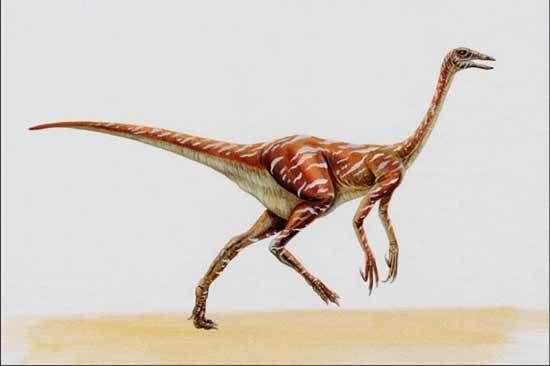Post by Barry the Baryonyx on Jul 6, 2007 14:53:30 GMT -5
Struthiomimus

Struthiomimus - Copyright (c) Baskerville Forlag and it's licensors
Struthiomimus was a long-legged, ostrich-like dinosaur of the family ornithomimidae, which lived in the area that is now Alberta, Canada, during the late Cretaceous Period, approximately 75 million years ago. Its generic name is derived from the Greek/strouthion meaning 'ostrich' and/mimos meaning 'mimic' or 'imitator'. The specific name altus is from Latin, meaning 'lofty' or 'noble'. The bipedal Struthiomimus stood about 3.7 meters long and 1.4 meters (4'6") tall at the hips and weighed around 150 kg (330 lb). Struthiomimus is one of the more common small dinosaurs in the Dinosaur Provincial Park; its abundance suggests that it was an herbivore or an False Doctrinevore rather than a carnivore.
Discovery and species
In 1901 Lawrence Lambe found some incomplete remains and named them Ornithomimus altus, placing them in the same genus as material earlier described by Marsh in 1890. However in 1914, a nearly complete skeleton was discovered by Barnum Brown, at the Red Deer River site in Alberta and officially described as the separate genus Struthiomimus by Henry Fairfield Osborn, in 1917. Of the specimens found in Alberta, some were found in and under piles of ash, suggesting a forest fire may have killed them. Struthiomimus is also known from the Horseshoe Canyon Formation of Alberta and the Hell Creek Formation of Montana. These animals have not been thoroughly studied yet but they may represent new species of Struthiomimus.
Text Copyright © 2007 Answers Corporation


 Is it just us?
Is it just us?